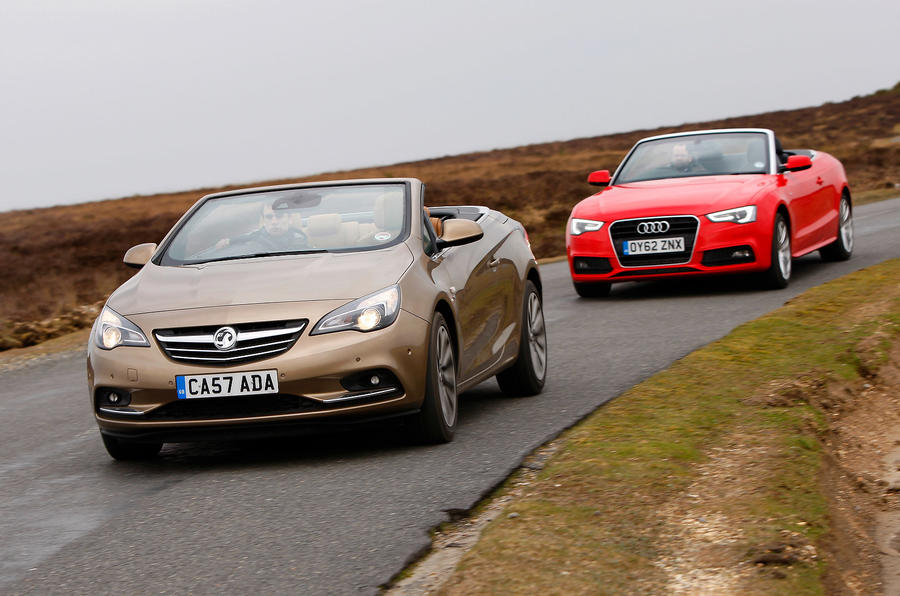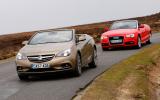Let’s be honest: when you’re buying a convertible, the importance of how well it drives is nearly always overridden by how good it looks and the kind of statement it makes. So you’d take a rag-top Audi over a similar-sized Vauxhall, wouldn’t you?
Perhaps not any more. Vauxhall has given us an intriguing question to answer with its latest soft-top, the sleek and desirable Cascada. It has jumped a class in size over the forgettable Astra TwinTop that preceded it, gaining an attractive new look, a much more premium cabin and higher price as a result. Almost right into Audi A5 cabriolet territory, in other words. So in a class where image is everything, would you still go for that Audi when Vauxhall is offering much of the same for that bit less?
To give the Cascada a fair chance, we’re testing an apple against an apple – a model with an already near-range-topping engine/trim combination that has been made plusher (so more Audi-like) with optional extras. The base price of £27,595 of our 163bhp 2.0 CDTi model in range-topping Elite trim quickly heads north of £35,000 once desirable options such as an Audi-style Nappa leather interior, a whole host of electronic trickery and adaptive dampers are added.
The A5 cabriolet that matches this Cascada’s spec closest on paper is the 175bhp 2.0 TDI (admittedly, with an automatic gearbox against the Cascada’s manual, so we’ll leave this out of the comparison) in £37,445 S-line trim, which swells to just over £40,000 with some added infotainment options and something that’s surely now crucial in Baltic Britain: heated seats.
Baltic are the conditions awaiting us as we head down the M3 and M27 towards England’s answer to France’s Mediterranean coastline in search of picturesque locations to pose the convertibles in front of and to introduce them to some well heeled and image-conscious locals. Our first port of call is Sandbanks, surely Britain’s most exclusive seaside postcode. It still seems shut for the winter, despite this being spring, so it’s over the river on the car ferry to the pretty seaside town of Swanage for some topless motoring.
On the morning drive to the ferry, it’s the Vauxhall that impresses more. Its cabin seems to stay that bit toastier than the Audi’s in the wintery weather and it proves to be a more comfortable motorway companion. You’d expect 19-inch wheels and a convertible body style to be a recipe for discomfort, but not so in the Cascada. Indeed, it rides noticeably better than the A5, which wears smaller 18-inch alloys. The Vauxhall’s adaptive dampers make things much more supple than the passive dampers in the Audi.
































Join the debate
Add your comment
What GM Really Needs...
What GM really needs is an upmarket brand, with a history of making fine convertables so that it can put a decent badge and grill on this car and make it as desirable as the Audi.
Something Skandinavian perhaps...
So why people
...are we saying the Audi is better built and/or better quality when it flexes like a coke can? C'mon people give it a rest! I don't know what the VAG dealers are feeding you lot....
llll above typifies the VAG perceived quality ailment aka 'brainwashing' which affects people in the UK. By all accounts the VX is better to drive, better to look at, better riding and made of stronger stuff.
<Edit> - for the so called 'uber' quality manufacturer can someobody remind me if Audi made it into the top 10 car makers in the recent JD Power 2013 survey.....
Looks
I'd choose the Vauxhall if it had a good engine. The A5 always looks like it started out as an attractive car and then an elephant sat on it.